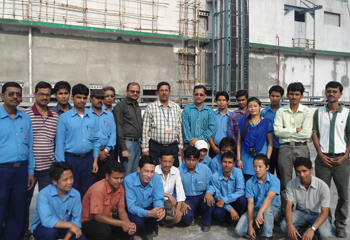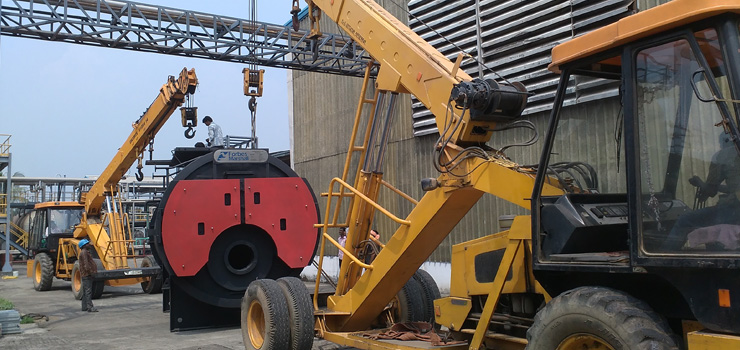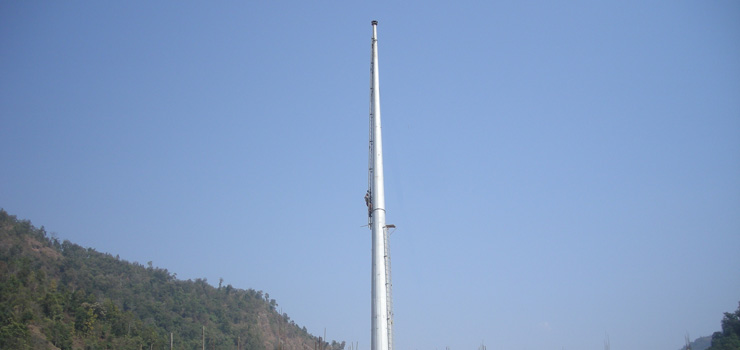Chillers are the single largest energy-using component in most industries and can typically consume over 50 percent of the electrical usage. Department of Energy estimates that chillers expend up to 30 percent in additional energy through inefficiency. Chillers running inefficiently also results in decreased equipment reliability, increased maintenance intervals, and shortened lifespan. The slightest decrease in chiller performance can have a major impact on efficiency. For instance, every 1 degree C increase in condenser water temperature above full load design can decrease chiller efficiency by 1 percent to 2 percent. A failing or neglected water treatment program can reduce efficiency 10 percent to 35 percent or more in extreme cases.
What Is Maximum Chiller Efficiency?
Contrary to popular belief, running the chiller at full load design and achieving the design kW/ton does not necessarily mean the chiller is running at maximum efficiency. Maximum chiller efficiency is producing the greatest tonnage at the lowest kilowatt usage. Maximum efficiency occurs with most chillers running at approximately 70-75 percent load and the lowest entering condenser water temperature (ECWT), based on design. Knowing a chiller’s efficiency and the effects of load and ECWT will help the facility determine the most efficient chiller configurations, saving the maximum on energy costs.
Tips to Improve Chiller Plant Efficiency
- Keep tubes clean for efficient heat transfer: – Heat transfer has the greatest single effect on chiller performance. Large chillers can have more than five miles of condenser and evaporator tubes, so high heat transfer is fundamental to maintaining efficiency.
- Treat condensate water: – Proper water treatment is required for all condenser water loops. This treatment eliminates scale, corrosion and biological growth. If these elements are found in the system, increase the amount of chemical treatment to the water.
- Analyze compressor oil: – Once a year, send a sample of the compressor lube oil to a laboratory for a spectrometric chemical analysis that will provide details about moisture content, metals, acids and other contaminants that affect performance. Oil should be replaced only if necessary. High moisture levels can indicate a purge unit problem, which has a significant effect on efficiency. Pull samples from low-pressure chillers more frequently, using a schedule based on purge run hours. Replace oil filters when they exhibit a high pressure drop and when the oil charge is replaced.
- Reduce entering water temperature: – Lower temperatures of water entering the chiller condenser system will improve efficiency. When cooler water comes into a system, less energy is required to cool the water to a normal operating temperature. Also, if the regulated temperature rises, surging may occur.
- Maintain a leak free system: – Compressor leak tests should be performed 3-4 times a year. A leak-free system is essential to the performance of a chiller system. Leaks in a system let in non-condensable in the form of air and moisture, which create stress on the system and lead to corrosion. Leaks also release harmful refrigerants into the environment.
- Install VFD/VSD drive in chiller motor: – The motor in a chiller often draws the single highest electrical load in a facility and variable speed drives minimize energy consumption by syncing the work load and motor efficiency. Variable speed drives also serve as a sort of soft starter function that lowers the initial inrush current. This role is especially important when a chiller is running on emergency backup power systems. LG chillers provide the option to add inverter specifications.
- Maintain proper water flow rate: – Flow rate must be regulated closely, because too low a flow rate reduces chiller efficiency, leading to laminar flow. The minimum flow rate is typically around 3 ft. per second. However, too high a flow rate leads to vibration, noise and tube erosion. The maximum recommended flow rate is typically around 12 ft. per second.
- Proper Insulation on chilled water pipeline: – Proper insulation increase the chilling plant efficiency. If insulation is not proper or pipeline is not insulated the heat loss will occurs and overall chilling plant efficiency will comes down.
- Maintain refrigerant charge: – The amount of cooling that any chiller can provide depends on how much refrigerant it moves through the compressor per unit time. It’s important to maintain the proper level of refrigerant. Leaks, as well as air and moisture, decrease efficiency and system reliability. Low refrigerant charge, usually resulting from leaks, causes the compressor to work harder and achieve less cooling effect.
- Purge non condensable gases: – Air and moisture are two non-condensable that can leak into low-pressure chillers. Non-condensable can reduce chiller efficiency by as much as 4% at 60% load and 7% at 100% loads. Air insulates tubes, preventing exchange and elevating condensing temperatures, which also makes the compressor work harder. Moisture promotes acid formation, which can damage motor windings and bearings. Installing purge units on low-pressure chillers minimizes the effect of non-condensable. Modern, high-efficiency purge units minimize both air ingress and refrigerant loss. Eventually, positive pressure chillers using HFC-134a, HFC-410a and HCFC-22 will replace low-pressure chillers. The newer units don’t require purge units because non-condensable can’t enter them.




